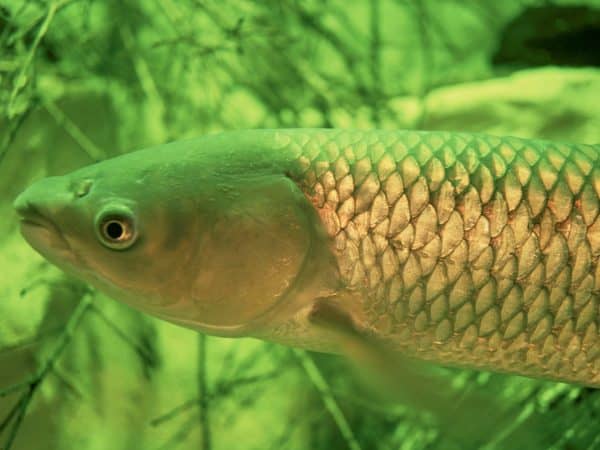
 A new joint study on the menacing spread of the Asian carp has found that the grass carp, one of four carp species to invade North American waters over recent decades, is now proliferating in three of the Great Lakes.
A new joint study on the menacing spread of the Asian carp has found that the grass carp, one of four carp species to invade North American waters over recent decades, is now proliferating in three of the Great Lakes.
Asian carp in the Great Lakes: Michigan, Erie and Ontario so far…
Grass carp have been found in Lakes Michigan, Erie and Ontario and are projected to wreak widespread devastation on local ecologies unless “immediate preventative actions” are taken, say a group of experts from Fisheries and Oceans Canada, the US Fish and Wildlife Services, the US Geological Survey, University of Toronto and the Great Lakes Fisheries Commission.
Asian carp – the grass carp, bighead carp, the silver carp and the black carp – were first introduced to North America from China in the early 1960s when aquaculture operations in the Southern US imported the fish, known for their voracious appetite, to help clean out vegetation from stock ponds.
Since then, the four species have spread throughout the Mississippi River Basin, aggressively outcompeting native species for food and even injuring humans along the way – the fish are known to jump out of the water when startled, with many reports over the years of flying carp (which can sometimes weigh over 40 kg) injuring boaters and swimmers. Reports on its proliferation state that in parts of the Illinois River system, asian carp now make up 50 per cent of the available fish by weight.
The new report stems from research conducted under the auspices of the DFO’s Asian Carp Program which between 2013 and 2016 caught and examined 23 grass carp from Lake Erie and Lake Ontario. The researchers found that nine of the fish were fertile grass carp and able to reproduce while DNA analysis concluded that all of the fish had been born outside of the Great Lakes and had travelled to the areas from US waterways, most likely through the Chicago-Area Waterway System and through Lake Michigan.
“For the first time, we have a binational, peer-reviewed study by some of the best minds and practitioners in the field who have a consensus on what the risk is to the Great Lakes from grass carp, and it’s pretty substantial,” said Marc Gaden, spokesman for the Great Lakes Fishery Commission to the Associated Press.
The report, entitled Binational Ecological Risk Assessment of Grass Carp for the Great Lakes Basin, states that the likelihood of the grass carp establishing itself within the Great Lakes during the upcoming five years is high for just Lake Erie but that over a longer time span of 10, 20 to 50 years, the likelihood of establishment is high for all the lakes except Lake Superior where overwinter survival for the fish is less likely. “The magnitude of ecological consequences increases from negligible to extreme by 50 years for lakes Michigan, Huron, Erie, and Ontario,” says the report.
A statement issued by the DFO states that the Canadian government remains “steadfastly committed to this fight” and lists the government’s plans for combatting the Asian carp, including through on-going participation in the Asian Carp Regional Coordinating Committee, on-going enforcement and inspection and coordinated research activities.
Leave a Reply
You must be logged in to post a comment.



 Share
Share Tweet
Tweet Share
Share




Comment